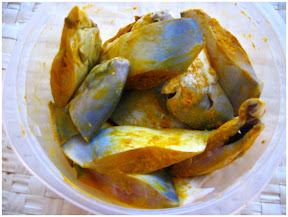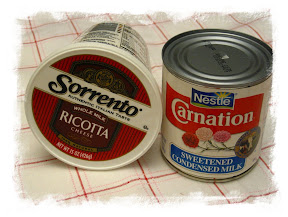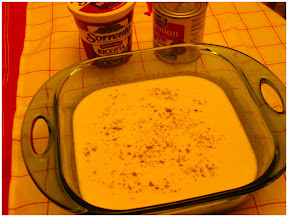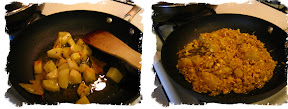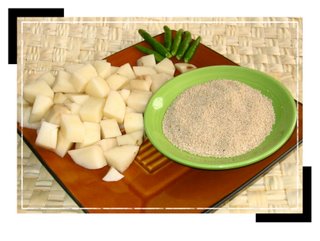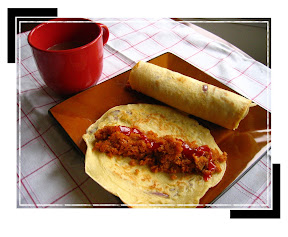
Saturday Morning Breakfasts at our home are usually my husband’s affair, he is in charge, whipping up a warm breakfast different from the toast-omelets or cereal-milk kind. This does not mean that he does not lapse from his routine, after all he is a man , but even if I take 52 Saturday mornings – 12 lapses – 4 traveling Saturdays – 4 Vacation Saturdays, the answer is 32, way better than 42 (!!!).
But this Saturday was different, to add a nice twist to the breakfast for WBB#6 Breakfast with a Twist at Nandita’s Saffron Trail, I woke up bright & early and donned the chef’s hat, relegating my hubby to the position of the sous-chef.
So I started with the Original Recipe of my Mom. She used to make Dimer Paratha or Egg Paratha which was a breakfast delight in itself and still is a favorite at our home not only for breakfasts but also for evening snacks. I added a twist by making a stuffing of soy chunks for this paratha, which made the paratha look like a wrap or a roll. I also make the stuffing with Keema if I am making this as an evening snack. For my breakfast I prefer the Soya as it is lighter and a more healthy way to start the day with.
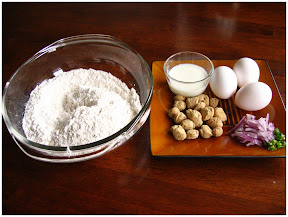
What You Need
For Paratha
All Purpose Flour/Maida ~ 2 cups
Eggs ~ 3 (you can also make do with 2)
Milk
Onions ~ ½ finely chopped
Chillies ~ 2/3 chopped
Salt
For the stuffing
Soy Chunks (Nutrela) ~ ½ cup -- you can try with soy granules too
Onion ~ ½ grind to a paste
Garlic ~ 1 small clove finely chopped
Maggi Hot & Sweet Tomato Sauce (any suitable alternative)
Salt
How I Do It
Mix together flour/maida, eggs and milk in a big bowl to make a batter. Stir till smooth. The thickness of the batter should be same as that needed for a pancake or say to make utthapam.
Add the chopped onions and chillies, and salt to this batter and mix well.
Grease your frying pan with Olive Oil.
Pour a scoop of this batter in the frying pan and spread it out (same as for cooking pancake)
Cook until golden in color and then flip and cook till golden on the other side too.
You can go ahead and eat it at this point, it's yummy
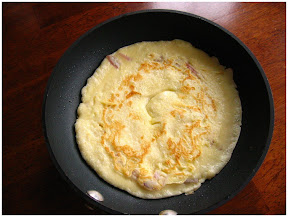
My li'l one loves to eat this with jam

For the stuffing
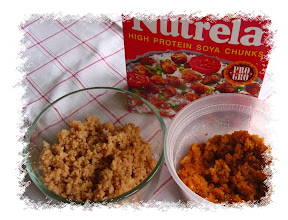
Soak the soy chunk in water and microwave for 2 minutes. Let them soak in the hot water for 1 more minute
Once they are soft put the chunks in the blender and mince them, so that they look as in the picture (left side).
In a frying pan heat Olive Oil.
Add the chopped garlic
Add the onion paste
Fry till they have browned and add the minced soy
Add Maggi Hot & Sweet Tomato Sauce or any suitable tangy alternative and cook till the soy is nicely cooked as in the picture (right side)
Add little salt.
To Serve
Put this stuffing in the center of the Egg Paratha, add sauce/ketchup, you can also add lettuce, tomato if you want. Roll it and serve hot.
Note: Instead of Soy you can use Keema/minced meat. Mix the keema with little yogurt, ginger paste and garlic paste and keep aside for 2/3 hours. Then cook same way as the soy.
Trivia: Nutrela soya chunks are made from fully cooked soybean and is a brand name for Textured Vegetable Protein(TVP) ,marketed by RSIL. "Meal Maker" was another brand available in India , I am not sure about it's existence in the present days.






